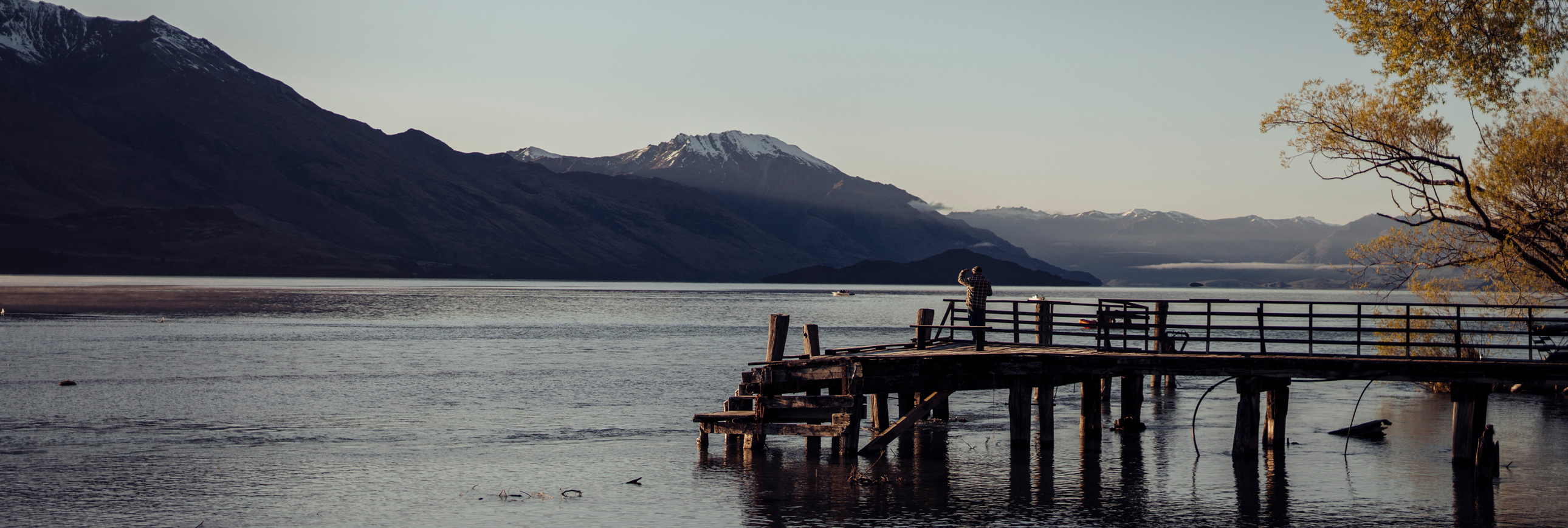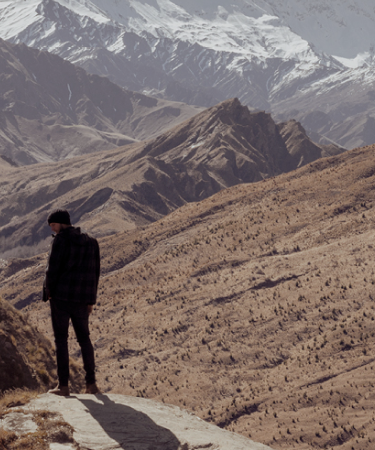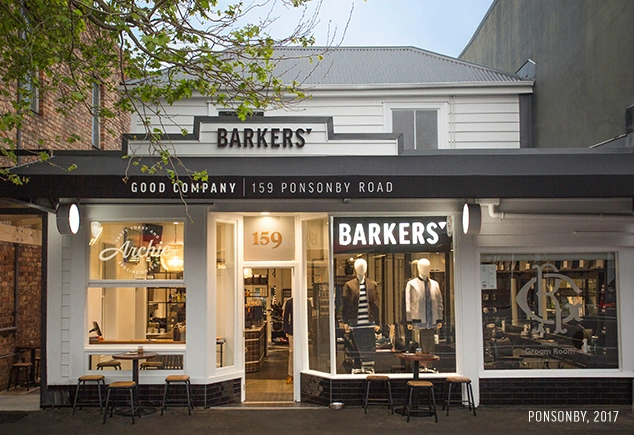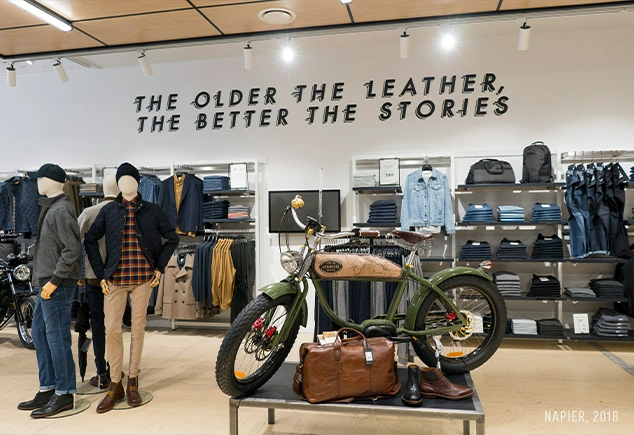

TRANSPARENCY
Journey
 Put simply, the idea is this: that the first decade at Barkers was about reviving a classic Kiwi brand. The second will be about making that brand as sustainable, ethical and environmentally low-impact as we can. It’s a project which is now nearly two years old, and one which has consumed much of that time with questions which are a kind of business philosophy. It’s been as hard and draining as anything I’ve ever done, but the breakthroughs are profound.
Put simply, the idea is this: that the first decade at Barkers was about reviving a classic Kiwi brand. The second will be about making that brand as sustainable, ethical and environmentally low-impact as we can. It’s a project which is now nearly two years old, and one which has consumed much of that time with questions which are a kind of business philosophy. It’s been as hard and draining as anything I’ve ever done, but the breakthroughs are profound.




How the new Barkers was born
 I said yes, and set out on the biggest adventure of my life.
I said yes, and set out on the biggest adventure of my life.




Despite the stirrings of momentum, we were still short on cash. This was a major barrier to the next item on the agenda: turning around our stores. Trying to find a way for them to match our new product was an inherently expensive exercise.
Opportunity knocked in Hamilton. Tainui had just built The Base – a big, striking mall on the outskirts of Hamilton. They saw what we were doing and wanted us in there, and we wanted to be there too.
The only catch was how to pay for a fitout. We settled on an amount which was generous from their side, but nowhere near enough to pay for a conventional store interior. Our workaround set the tone for much of the first few years: we got creative and made do with what we had.
Working off sketches from our design agency Switch and store designer Adrian Nanckevill, we made use of a bunch of recycled timber and interiors salvaged from dismantled New Zealand villas. We had staff raiding wrecker’s yards and second-hand stores, with the idea being to nod at an automotive theme, in tribute to both Hamilton’s petrolhead heritage, and Ray Barkers’ lifelong involvement with motor racing.
The budget was so tight that we had the senior executive down for the final push, double-bunked in motels and working 14 hour days on drills, hammers and paintbrushes. When ‘The Garage’, as we dubbed it, opened, the sense of achievement was overwhelming. The store was the first fully realised vision of what we wanted the brand to be.
The idea took root: we would give every store its own unique identity, something which played on the geography and history of the area. There would be only good raw materials in there – no compressed timber or gib. We would work to find classic memorabilia and recondition old surfboards and push bikes and guitar amps – whatever the theme was, we’d express it in the store.
It made the fitouts that much more difficult, but far more meaningful to us. And to the customer: the new store in Hamilton traded above expectation from day one, providing further proof we were on the right track.
At the same time, we were working on rebuilding the product. When we began the new Barkers project, almost all the garments were sourced from New Zealand agents. Which is to say that they found factories in China to make our goods, and sold them to us.
This was a problem. It meant we were paying two sets of people, which inevitably compromised on quality. Worse, it meant we had no visibility on how the garments were made. This made me very uncomfortable, as I knew from experience that there were some first rate factories in China, which made quality garments in an ethical way. And some much less so.
We decided we wanted to know more. To not just go to Hong Kong and find new, cheaper, but to China – the world’s factory – and find the source.
This was far more easily said than done. We were, comparatively, a tiny fish, from a tiny country. And we didn’t just want to buy from the manufacturers – we wanted to see how they worked, to walk the factory floor.
The next few years were an endless battle, equally exhilarating and frustrating. We would make major breakthroughs, finding new places to make socks or shirts, while struggling mightily to get a t-shirt manufacturer we were happy with. Sometimes we would get somewhere great and they would laugh us out of the room because our orders were too small. Other times we saw conditions which, while normal for China, weren’t where we wanted them to be.
Still, we kept doggedly at it. We ate a lot of fascinating food, had a lot of late nights with factory owners, traveled way off the beaten path. And in time we got this vital piece of the puzzle into place.
The next big breakthrough came in Wellington in 2013. By then we had rolled out a large number of new concept stores, and felt on a major roll. Still, none felt like it quite expressed all we aspired to be. The new stores were excellent, but mostly contained in the shells of where we had always been. Yet we were ambitious for Barkers – we wanted it to become a lifestyle brand, where men could get more of what they need.
The opportunity came on Lambton Quay. The area had long been a stronghold of the brand, thanks largely to Matty, the irrepressible manager down there. Yet for ten straight years sales had flatlined. It was still a strong store, but a very tired one that didn’t offer a good impression of the brand.
We were offered a space down the road, and got seriously interested. It was a better part of the street, and less of a long, narrow corridor. The only catch was its size: over 350sq m, more than twice as big as the typical store. This was a huge leap for us, yet we took a deep breath and leapt.
We did it to show what the future of Barkers looked like. A specialist suiting area where you could sip coffee or whisky. A range of Baxter skincare products, Converse footwear and records from local legend Slowboat. A barber’s chair where you get a fresh fade and something cold while it happened.
In short, a new kind of men’s lifestyle experience. It was a smash hit, with Wellingtonians instantly understanding what it was we were trying to do. The store suddenly took off, and now sales have more than doubled. It gave us the confidence to do something even bigger in Auckland – a flagship on High St, where it all began. 450 sq metres, with bespoke suiting, a six chair barber and barista. The grandest expression yet of where we were heading.
All this might make the last ten years look like plain sailing. Yet they were anything but. Quite apart from all the late nights and hard work which went into rebuilding the business, there was one moment where we inarguably bit off more than we could chew.
It began not long after we’d opened the new Lambton Quay store. We were on a roll, and felt invincible. Life has a way of taking you down a peg or two when that happens.
Topshop started with a conversation between ourselves and Karen Walker, who had the franchise for New Zealand. She was looking for someone to grow it here into the kind of huge standalone stores which had made it a mega-growth fast fashion pioneer in the UK and Europe.
We were seriously interested. We felt that we had learned a lot about retail over the previous five years, and the idea of working with New Zealand fashion royalty in Karen was hard to pass up.
We put together an agreement, flew to the UK multiple times and eventually found a perfect site – 1500sq m on the corner of Queen St, ready to bring one of the world’s signature brands of the 21st century to New Zealand.
Opening day was like little else I’ve experienced in the rag trade. Queues snaked around the block, and the place was more like a concert than a store. Better yet, the queues stayed there for weeks afterwards – people traveled up to shop, shopped like it was on the bucket list.
It stayed that way for the first year, and we booked ambitious expansion plans into Wellington and Christchurch. Little did we know, trouble was already coming.
The problem was that Topshop was a Northern Hemisphere brand, and thus most of the range was out of season. Once the initial buzz wore off, people began to get frustrated that they couldn’t always get a good jersey in winter. That eventually bit the Australian operation, which went into receivership, and from there the writing was on the wall: without Australia supporting Southern Hemisphere product ranges, there was no chance for New Zealand. A little over a year ago, we reluctantly shut it down.
It was no one’s fault, we had a great team who worked incredibly hard – and working with Karen and Mikhail was truly brilliant. It was heartbreaking, but was also a valuable lesson for us: if you’re going to go into business, you want to control the whole operation.
That’s why I’m so excited about our acquisition of Max last month. It’s another iconic New Zealand brand, the mirror image of Barkers, but for women. It has many of the same opportunities Barkers had when we first came into it a decade ago, and I can’t wait to build a team to take the lessons we learned into a new realm. A critical difference with Topshop is this: we control the whole operation.
 Working on Topshop was also a somewhat sobering reminder of what I’d thought about when assessing our suppliers all those years ago when we founded Barkers. That I didn’t like not knowing where the garments were made. The whole concept of fast fashion, with all its attendant waste and lack of emphasis on quality and longevity had started to grate on me.
Working on Topshop was also a somewhat sobering reminder of what I’d thought about when assessing our suppliers all those years ago when we founded Barkers. That I didn’t like not knowing where the garments were made. The whole concept of fast fashion, with all its attendant waste and lack of emphasis on quality and longevity had started to grate on me.
This was in part because of a book I read in January of 2017, before Topshop melted down, but when the writing was on the wall. Let My People go Surfing is the story of Patagonia, written by its founder, Yvon Chouinard. It’s about the way he built a giant outdoors brand while emphasising quality and sustainability at every turn. I was given a copy by Roy Dillon, one of our directors, and started reading it on a beautiful Coromandel day. That evening, I finally put it down, having devoured it in one sitting.
It spoke to me in ways few books ever have – articulating a purpose for business and clothing that I had been dreaming on without quite knowing it. It was a kind of awakening, for me – a sense of discovery, of knowing what the next challenge was.
Put simply, the idea is this: that the first decade at Barkers was about reviving a classic Kiwi brand. The second will be about making that brand as sustainable, ethical and environmentally low-impact as we can. It’s a project which is now nearly two years old, and one which has consumed much of that time with questions which are a kind of business philosophy. It’s been as hard and draining as anything I’ve ever done, but the breakthroughs are profound.
I’m going to write a follow up in six months’ time, when we launch the new Barkers. This story has been about the first 10 years; that will be about the next decade.
I can’t wait to tell you all about it.
Sincerely,

Jamie Whiting,
CEO, Barkers Group
